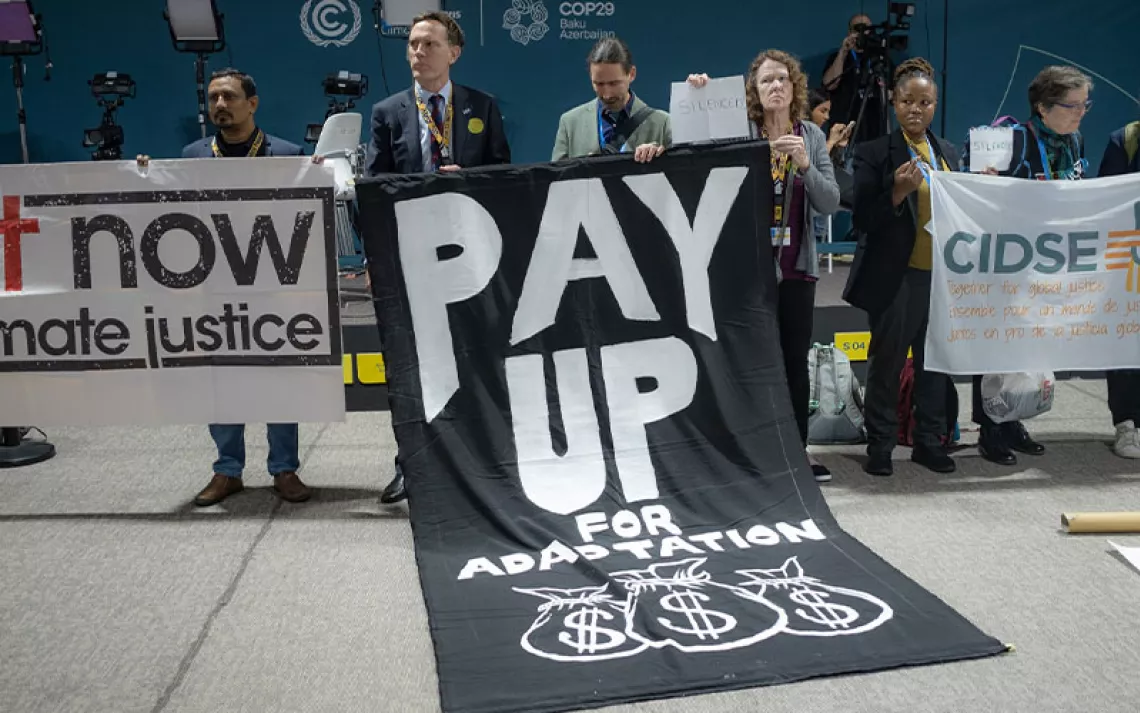Beyond the West, Drought Creeps In
A warming planet means drier conditions for states nationwide

Photo by franckreporter/iStock
The streams don't so much flow as creep. In towns across the state, residents live with water restrictions as municipalities ask them to conserve. Municipalities are asking residents to refrain from watering their lawns given the reduced water supplies. This drought—and the data suggesting that because of climate change, drought-like conditions will become the norm—is why Ted Diers, the state's watershed management administrator, has removed his lawn.
“I have gone completely to landscaping that is mostly mulched with relatively drought-resistant bushes,” he said. “I have a big patio, and then all of that drains down into the last little bit of lawn that I have, so whenever we get rain, it's gonna go right there. And so I don't water.”
Diers's story sounds familiar—a tale of coping with scant water supplies that are now the norm when speaking about California, Idaho, or Nevada. But Diers doesn't live out West. He lives in New Hampshire.
“We're in the midst of a two-year drought,” he said. “It started last year, and it was pretty severe. We had a lot of parts of the state that were in historic drought conditions.”
As public attention has been focused on the severe drought playing out in the West, large portions of the rest of the United States have also been struggling with water shortages. For much of this year, just under half of the US has been in drought, including Hawai'i and Alaska. In the Midwest, drought has plagued Wisconsin, Iowa, and especially Minnesota. The state's Department of Natural Resources has recommended water restrictions for more than 500 Minnesota cities. Meanwhile, in the Northeast, parts of Maine, Vermont, New Hampshire, and New York have spent much of the summer in similar straits.
For those of us not engaged in water monitoring, drought is not well understood and thus easy to ignore—at our own peril. Nationwide, droughts are second to hurricanes as the costliest natural disaster. Among drought's many impacts, which include water scarcity and losses to or destruction of natural habitat, research from Australia suggests that over the long term, drought can harm a community's mental health, especially in rural areas.
Unlike wildfires or hurricanes, drought is a slow-moving disaster. We inch our way into catastrophe one missed snowfall, one delayed rainstorm, one watered lawn at a time. Drought is also relative depending on geography. For example, this June, New Hampshire averaged 2.11 inches of rain, falling almost 50 percent short of its monthly norm of 3.94 inches. But that same rainfall would have been above average in California, which, statewide, has never seen more than 1.06 inches of rainfall in June (the state gets most of its rain snow in the fall and winter). This year California received .17 inches of rainfall in June, down from an average of .35 inches.
That drought is relative matters, because ecosystems—and the humans that depend on them—have evolved under certain levels of rain and snow. In the East, even when drinking water levels are dangerously low, it's easy to miss that you're affected.
“New Hampshire is just a bunch of trees; whether it's dry or wet, it's just a bunch of trees,” said Diers.
Climate models predict more frequent drought for places like New England, where droughts have generally been rare. At the same time, when the rain does come, it's going to happen in smaller events, which means fewer rain showers and more deluges. All of which impacts not only the ability to have water to drink, bathe, and cook with, but also the water farmers depend on to grow food.
“Agriculture in the US has been impressive in terms of productivity,” said Isaya Kisekka, an associate professor of agricultural water management and irrigation engineering at the University of California, Davis. “But we are reaching the limit where our system and changing climate cannot sustain it.”
In New England, where farmers have traditionally depended on rainfall to water their crops, they are increasingly turning to irrigation. California's Central Valley is only 1 percent of the nation's farmland but produces a quarter of the nation's food. It relies so heavily on groundwater that it's using that water faster than it can be replaced. Areas of the region are sinking as a result. But like New Hampshire, as the climate warms, California will have boom and bust periods of rainfall. The dry years will be drier but the wet years will be wetter. Recharging groundwater supplies during the wet years will allow them to tide the state over during the dry ones. The hard part is finding ways of getting rainwater to filter through the soil into the groundwater below without picking up agricultural pollutants, like pesticides or fertilizers.
Kisekka points to the high plains as even more tenuous. The region provides a little more than 15 percent of the world's grains—wheat, corn, and soybeans—most of which rely on the Ogallala aquifer for water. The Ogallala can be thought of as a massive underground lake that dates back to the Pliocene, a time before the dinosaurs. It stretches across eight states from South Dakota through northern Texas. Nebraska, whose fight against the Keystone XL Pipeline centered in part over concern that the pipeline might damage the Ogallala, sits almost entirely over the aquifer. The problem is that the aquifer is very slow to recharge.
“Basically, you're mining it like oil,” Kisekka said. “Once it's gone, it's gone.”
He worries that the broader public won't fully awaken to the risks of drought until “we cannot produce enough nutritious food, not just calories, but nutritious food for everybody.”
 The Magazine of The Sierra Club
The Magazine of The Sierra Club



